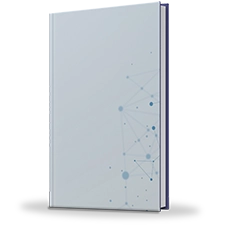Hemocytometer is a counting chamber device that was originally designed to count blood cells. It consists of a rectangular indentation on a thick microscope slide. The indentation can act as a precision volume chamber. By observing the area of the grid, it is hence possible to count the cell number in a specific fluid volume. Hemocytomers come with different rulings for different applications and uses such as spinal fluid counting, microbial eggs counting in fecal matter, bacteria counting, and sperm counting. In addition, a hemocytometer with Howard Mold rulings can be used in the food and packaging industry to detect mold on food.
COVID-19 Impact Analysis
COVID-19 is an infectious disease that originated in the Hubei province of the Wuhan city in China in late December. The highly contagious disease, caused by a virus, severe acute respiratory syndrome coronavirus 2 (SARS-CoV-2), is transmitted from human to human. Since the outbreak in December 2019, the disease has spread to almost 213 countries around the globe with the World Health Organization declaring it a public health emergency on March 11, 2020.
Pharmaceutical and biotech companies together with governments around the globe are working to address the COVID-19 outbreak, from supporting the development of vaccines to planning for medicine supply chain challenges. Currently, around 115 vaccine candidates and 155 molecules are in the R&D pipeline. Moreover, commonly used drugs such as hydroxychloroquine have witnessed a dramatic surge in demand for the management of COVID-19. Such high demand for these drugs has presented huge opportunities for manufacturers of COVID-19 management drugs, as many developed countries are facing a shortage of these drugs. Thus, the pharmaceutical and biotechnology industries are expected to witness significant growth in the future, owing to the demand for vaccines and treatment drugs for COVID-19.
With COVID-19 the supply chain of raw materials required to manufacture hemocytometers has been disrupted in many countries. In addition, the market growth of hemocytometers is declining as manufacturers of these devices have slowed down their production due to the pandemic. Therefore, COVID 19 is expected to have a significant impact on the hemocytometer market.
Top Impacting Factors
Rising cases of infectious and chronic diseases has led to increased use of hemocytometers in hospitals and diagnostic centers. Hence this factor is leading to the growth of the hemocytometer market.
In addition, governments in many developed nations are increasing their funding for research and development activities related to cell-based research, which is notably contributing toward the market growth.
Growing number of biopharmaceutical and biotechnology companies all across the world has further led to the growth of the market. This is attributed to the fact that hemocytometers find applications in biotechnology where they can be used to count cell numbers in cell cultures.
However, the high cost associated with the manufacturing of hemocytometers and human sampling errors associated with these devices can impede the market growth during the forecast period.
Key Market Trends
The medical application segment of the hemocytometer market is anticipated to grow during the forecast period, owing to the wide usage of hemocytometers in cell counting and increasing government funding in the field of stem cell research where hemocytometers are often used.
The diagnostic & hospital segment also expected to grow at a high rate. This can be attributed to the increasing cases of chronic diseases associated with blood and rising investment by different key players in this segment.
Hemocytometers are now finding application in diagnosing sperm count in humans. This application can help in the growth of the market due to rising cases of infertility among men all across the world.
The Asia-Pacific hemocytometer market is growing at a high rate due to growing number of stem cell activities in this region. In addition, the number of biotechnology companies is increasing in the nations such as India and China, which lead to market growth.
Key Benefits of the Report
- This study presents the analytical depiction of the hemocytometer industry along with the current trends and future estimations to determine the imminent investment pockets.
- The report presents information related to key drivers, restraints, and opportunities along with a detailed analysis of the market share.
- The current market is quantitatively analyzed to highlight the growth scenario.
- Porter’s five forces analysis illustrates the potency of buyers & suppliers in the market.
- The report provides a detailed analysis depending on competitive intensity and how the competition will take shape in the coming years.
Questions Answered in the Hemocytometer Report
- Which are the leading players active in the hemocytometer market?
- How is each segment of the market expected to grow during the forecast period?
- What are the adoption trends for the hemocytometer market in emerging economies and established economies across the world?
- What are the current trends that will influence the market in the next few years?
- What are the driving factors, restraints, and opportunities of the market?
- What future projections would help in taking further strategic steps in the market?
- What are the impacts of COVID-19 on the industry?
- What is a hemocytometer?
- What are the current and predicted trends of the market?
Hemocytometer Market Report Highlights
| Aspects | Details |
| By Type |
|
| By Application |
|
| By End User |
|
| By Region |
|
| Key Market Players | Hausser Scientific, Innovatek Medical, Thomas Scientific, PHYWE Systems GmbH and Co. KG, Paul Marienfeld GmbH and Co. KG, Danaher Corporation, Abcam PLC, BRAND GmbH and Co. KG, PerkinElmer, Merck Millipore |
Loading Table Of Content...



